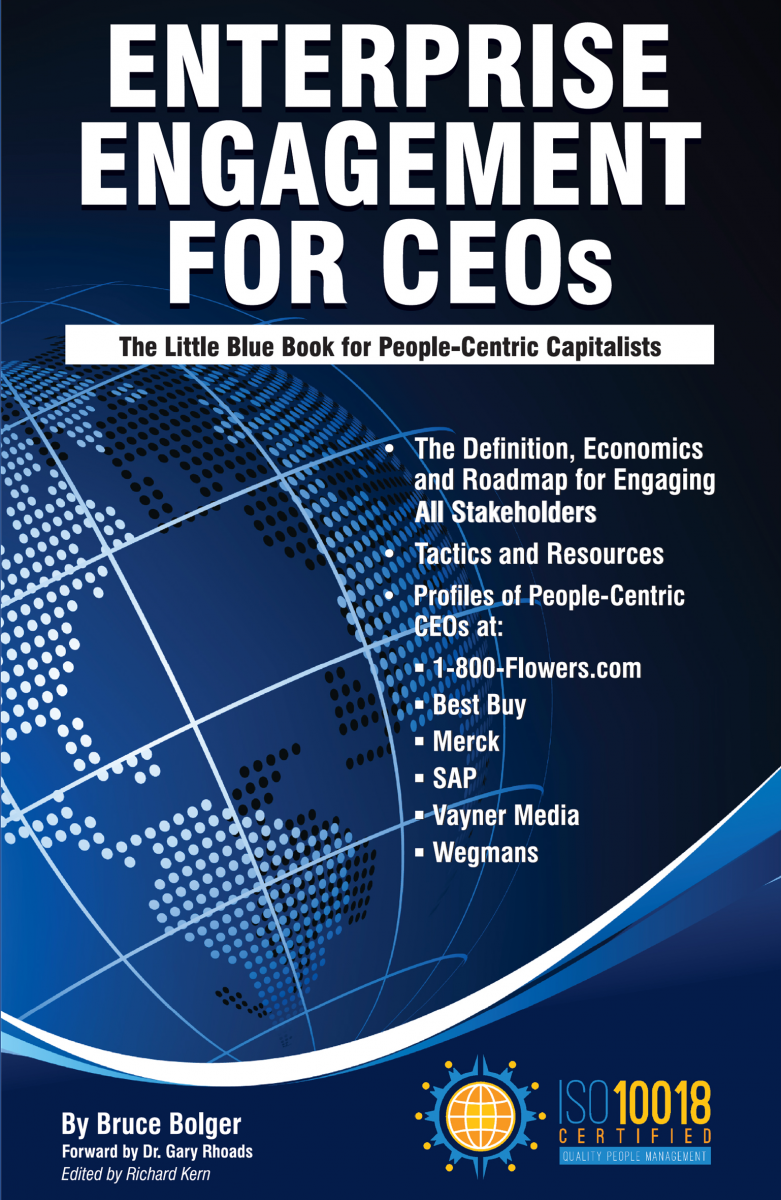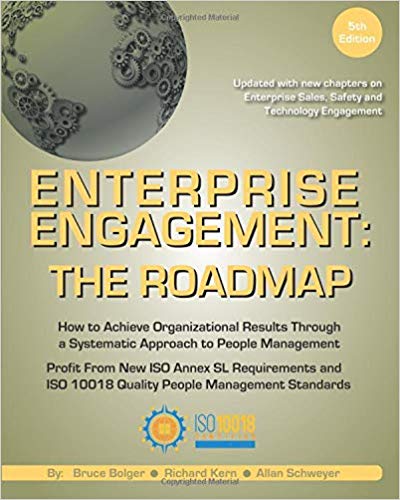Engagement Is Critical in Government, Too: Former HUD HR Chief
A government office could increase fees by 30% through effective community engagement, cut costs by 20%, and not only would staff be unable to benefit, it might very well see it’s budget change the following year, raising the bar but with no way for anyone on the team to personally benefit. Add to this challenge the fact that government has a highly regimented personnel management system not always geared to rewarding the best performers.
 In a recent article for the Federal News Network, Anderson prescribes what government can do to engage people despite these challenges. He notes that the “Government Performance and Results Act (GPRA) Modernization Act of 2010 requires federal agencies to engage in performance management and to strengthen employee engagement in order to improve organizational performance. The annual Federal Employee Viewpoint Survey (FEVS) assesses, among other things, performance management and employee engagement.”
In a recent article for the Federal News Network, Anderson prescribes what government can do to engage people despite these challenges. He notes that the “Government Performance and Results Act (GPRA) Modernization Act of 2010 requires federal agencies to engage in performance management and to strengthen employee engagement in order to improve organizational performance. The annual Federal Employee Viewpoint Survey (FEVS) assesses, among other things, performance management and employee engagement.” Each year, federal agencies must plan for how they will lead and manage their staffs, he writes. “The reality is that many federal agencies will ‘check the box’ and end up with performance plans and employee engagement strategies that will be either siloed or loosely connected. As a result, they can only hope that their employee engagement efforts will lead to better performance, as promised by many business cases. The truth is they will likely miss out on the symbiotic relationship between performance and engagement. Strategically, the better approach is to integrate these two critically important human capital processes by making performance management the centerpiece of the employee engagement strategy. By doing so, federal agencies will drive employee engagement, transform organizational culture, and impact program performance.”
Note that the majority of recognition programs in the US probably are not tied to performance management as he prescribes, and operate in the same siloes he urges against.
According to Anderson, the Office of Personnel Management (OPM) defines performance management as “planning, developing, monitoring, rating and rewarding employee contributions.” It defines employee engagement as “An employee’s sense of purpose that is evident in their display of dedication, persistence and effort in their work or overall attachment to their organization and its mission.”
He explains that the Federal Employment Viewpoint Survey includes ten questions on performance management, including performance feedback, performance rating, and performance recognition and rewards. The Employee Engagement Index (EEI) consists of 15 questions. The performance management and employee engagement questions help make up the questions in the EEI sub-indices of Leaders Lead, Supervisors, and Intrinsic Work Experience, he outlines.
In a Technical Report entitled “The Keys to Unlocking Engagement: An Analysis of the Conditions that Drive Employee Engagement,” OPM cites performance management as the key driver of employee engagement, which the author documents in the article through three case studies on the integration of performance management systems with employee engagement efforts. “The relationship between performance management and employee engagement is definitive and symbiotic. The trick is to do performance management well using established best practices, especially emphasizing leadership behaviors. The data also shows that improvements in performance management can offset some of the adverse effects of extraordinary events like government furloughs and shutdowns.”
However, he adds, “It is worth noting that performance management is not a panacea. Agencies must also continue to focus on improving other workplace conditions. Workplace conditions such as effective communication, teamwork, employee development, job resources and work/life balance will either enhance the effectiveness of performance management or offset the gains in performance management, even leading to a decline in employee engagement.”
Master the Principles of Stakeholder Capitalism And Implementation Through Enterprise Engagement

This is the definitive implementation guide to Stakeholder Capitalism, written specifically to provide CEOs and their leadership teams a concise overview of the framework, economics, and implementation process of a CEO-led strategic and systematic approach to achieving success through people. (123 pages, $15.99)

The first and most comprehensive book on Enterprise Engagement and the new ISO 9001 and ISO 10018 quality people management standards. Includes 36 chapters detailing how to better integrate and align engagement efforts across the enterprise. (312 pages, $36.)
OTHER RESOURCES TO ACTUALIZE STAKEHOLDER CAPITALISM
Communities: The Enterprise Engagement Alliance and Advocate and the Brand Media Coalition free resource centers offering access to the latest research, news, and case studies; discounts, promotions, referrals, and commissions, when appropriate to third-party solution providers from participating coalition solution provider members.
Online Overview:
10-minute short course: click here for a 10-minute introduction to Enterprise Engagement and ISO standards from the Coggno.com learning platform.
Services:
• The Engagement Agency at EngagementAgency.net, offering: complete support services for employers, solution providers, and technology firms seeking to profit from formal engagement practices for themselves or their clients, including Brand and Capability audits for solution providers to make sure their products and services are up to date.
• C-Suite Advisory Service—Education of boards, investors, and C-suite executives on the economics, framework, and implementation processes of Enterprise Engagement.
• Speakers Bureau—Select the right speaker on any aspect of engagement for your next event.
• Mergers and Acquisitions. The Engagement Agency’s Mergers and Acquisition group is aware of multiple companies seeking to purchase firms in the engagement field. Contact Michael Mazer in confidence if your company is potentially for sale at 303-320-3777.
Enterprise Engagement Benchmark Tools: The Enterprise Engagement Alliance offers three tools to help organizations profit from Engagement. Click here to access the tools.
• ROI of Engagement Calculator. Use this tool to determine the potential return-on-investment of an engagement strategy.
• EE Benchmark Indicator. Confidentially benchmark your organization’s Enterprise Engagement practices against organizations and best practices.
• Compare Your Company’s Level of Engagement. Quickly compare your organization’s level of engagement to those of others based on the same criteria as the EEA’s Engaged Company Stock Index.
• Gauge Your Personal Level of Engagement. This survey, donated by Horsepower, enables individuals to gauge their own personal levels of engagement.
For more information, contact Bruce Bolger at Bolger@TheEEA.org, 914-591-7600, ext. 230.














